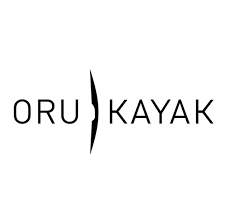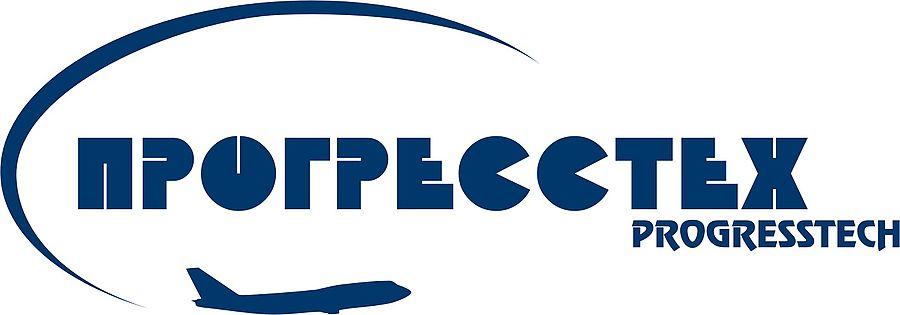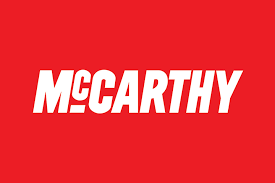Autodesk® Revit®, AutoCAD® for the largest skyscraper in China
Categories
Description
Project summary
A striking new addition to the Shanghai skyline is currently rising in the heart of the city’s financial district. The super high-rise Shanghai Tower will soon stand as the world’s second tallest building, and adjacent to two other iconic structures, the Jin Mao Tower and the Shanghai World Financial Center. The 121-story transparent glass tower will twist and taper as it rises, conveying a unique feeling of movement and growth, while reflecting the reemergence of Shanghai’s economic andcultural influences amid the rise of an increasingly modern China. The massive mixed-use facility will include commercial and retail space; entertainment and cultural venues; a conference center; a luxury hotel; and public gardens, all evoking the sense of a self-contained city within Shanghai.
Once complete, the 632-meter Shanghai Tower will be the largest skyscraper in China as well as one of the most sustainable. The towering skyscraper comprises nine cylindrical buildings stacked on top of one another, all enclosed by a circular inner curtain wall and a triangular facade enveloping the entire structure. Each vertical neighborhood has its own atrium, featuring a public sky garden, together with cafes, restaurants, and retail space. The double-skinned facade creates a thermal buffer zone to minimize heat gain, and the spiraling nature of the outer facade maximizes daylighting and views while reducing wind loads and conserving construction materials. To save energy, the facility includes its own wind farm and geothermal system. In addition, rainwater recovery and gray water recycling systems reduce water usage. The owner and design team are targeting a LEED® Gold rating and a China 3 Star rating, ambitious goals for a project the size of the Shanghai Tower.
The challenge
The sheer size of the Shanghai Tower presents complex design and construction management challenges. “The Shanghai Tower is a massive project with over 575,000 square meters of building space,” says Jianping Gu, director and general manager for Shanghai Tower Construction & Development Co., Ltd., the tower’s owner/ developer. “We knew that if we tried to work in a traditional way, using traditional tools and delivery systems, it would be extremely difficult to carry out this project successfully.”
Reducing building materials by 32 percent.
The project involves the collaboration of a global team, including: • Shanghai Tower Construction & Development— owner/developer • Gensler—design architect • Architectural Design and Research Institute of Tongji University—local design institute • Thornton Tomasetti—structural engineer • Cosentini Associates—MEP engineer • Shanghai Construction Group—general contractor • Shanghai Installation Engineering—mechanical and electrical general contractor • Shanghai Xiandai Engineering Consultants— design management consultant • Autodesk Consulting—BIM strategy, training, and implementation consultant “Because Shanghai Tower is such a complex building, it could not be represented accurately with typical software or design methods,” says Jiliang Chen, deputy chief architect and deputy director of the project operations department at the Architectural Design and Research Institute of Tongji University. “One of the most challenging issues is the coordination of the extended design team,” adds Yi Zhu, senior principal and general manager at Thornton Tomasetti. The solution To help meet the ambitious goals set for the building, the Shanghai Tower owner required the implementation of a Building Information Modeling (BIM) process using Autodesk BIM solutions for the design and construction of the Shanghai Tower. The project team relies on a combination of Autodesk® Revit® Architecture, Autodesk® Revit® Structure, and Autodesk® Revit® MEP software for the tower’s design and documentation. The team is also using Autodesk® Navisworks® Manage software for coordination and collaboration, Autodesk® Ecotect® Analysis software for sustainable design analysis, and traditional AutoCAD® software for drawing production. “From a property owner’s perspective, BIM provides an excellent tool for the design, construction, management, and investment control of the entire project,” says Gu. Transforming work processes Early on, the owner engaged Autodesk Consulting to provide BIM strategy and implementation consulting services, as well as application training. Autodesk Consulting began its effort by helping the owner develop a BIM strategy and deployment plan for the project, and retooling design and construction workflows to support BIM-based processes. The team created detailed plans for project collaboration and document management, as well as defining the BIM deliverables for the entire project lifecycle. Autodesk Consulting also helped the owner implement an on-site BIM application environment for a local project team of over 50 members, including owner personnel and key project participants from the extended global project team. In addition, Autodesk Consulting provided software training and ongoing technical and BIM coaching support. “By combining Autodesk’s BIM technology and the deep expertise of Autodesk Consulting, we have been able to successfully transition to BIM much faster. As a result, this project has set new standards for the information management of construction projects in China,” says Gu. Integrating the design The extended architectural and structural teams—with designers in offices around the world—shared their design models, enabling them to collaborate and contribute insights about the design in the context of the project. In the construction phase, the local project team, working from temporary offices near the construction site, routinely shared its models for project coordination and collaboration. This communication of design data resulted in a natural coordination of the project as it unfolded. In addition, the team used both Revit and Navisworks Manage software for formal clash detection. “We used Revit Architecture software to design and model the tower and then shared those models with our mechanical, electrical, and structural consultants,” explains Michael Peng, associate senior designer at Gensler. “Autodesk Revit provided a common platform for our design partners, giving the team a more accurate representation and deeper understanding of the project,” adds Jun Xia, principal and regional design director at Gensler. “BIM accelerated our whole design process, enabling our engineers to access design data and geometric sizes directly from the building models, and to use thatinformation for calculation and analysis,” says Zhu.
Improving design communication The tower’s iconic twisting shape and dualskinned facade were extremely difficult to convey using traditional 2D approaches, making modelbased design vital for the project’s success. “BIM helped us visualize the tower in 3D and analyze the design for improved decision making,” says Xia. “For example, we used the Revit design model with the reflection analysis features of Ecotect software to analyze the glare from the tower throughout the city. This helped the design team optimize the outer curtain wall—even down to the position and angle of individual pieces of glass—to minimizelight pollution.” “During design, BIM was indispensable for coordinating the major design disciplines and producing construction documentation,” reports Chen. Model-based visualizations will also aid in the construction process. “By visualizing a 3D virtual building, we can better monitor construction and gauge our progress against the schedule,” says Xiaoming Yu, deputy chief engineer and design supervision department manager for Shanghai Installation Engineering. “In fact, we require BIM deliverables from all the subcontractors and equipment suppliers. And during construction, it will be much easier for the workers to understand construction drawings that contain a combination of traditional views such as plans and sections, as well as 3D views and visualizations of complicated areas.” Enhancing coordination The project team used the Revit platform for early coordination of the major design disciplines. In the construction phase, the team is combining the Revit design models and the fabrication models in Navisworks for whole project coordination. “As construction proceeds, BIM is helping us coordinate the subcontractors’ fabrication models, leading to a better quality design and the avoidance of rework costs,” says Chen. “For example, the tower’s basement has already been built, and comprises five stories and 170,000 square meters of space,” says Gu. “During design development, we found only seven clashes. During construction, there were no clashes at all. It would be very difficult if not impossible to get results like that without BIM.” Conserving more energy A central and attractive feature of the tower’s design is its transparent skin, which creates ventilated atriums that naturally conserve energy by moderating the atrium’s air temperature. “Green building and sustainable design were a common goal for the designers, as well as the property owner,” says Xia. “Model-based design was essential, as many aspects of our performance-based design were realized through simulations and analyses,” adds Peng. For example, during the design phase the project team used the Revit Architecture model for whole-building energy analysis, giving the designers quantitative feedback on building energy performance. “We shared this information with our owners and consultants to better inform our design decisions and trade-offs,” says Peng. Saving building materials The building shape itself will produce the largest energy savings in the form of an efficient, costeffective structural frame. “Using Revit Structure, we produced more than 20 design options before settling on a structural system of super-columns, with outrigger trusses supported by an inner concrete tower,” says Zhu. The team kept iterating the design, including the rotation angle of the building’s cam-shaped outer skin, to analyze the structure’s resistance to wind and seismic loads. The result was well worth the effort. Gensler estimates that the building uses 32 percent less material than a conventional tower—saving material costs as well as the energy required to manufacture more steel and concrete. Extending the value of BIM for building lifecycle management. Improving construction efficiency Both the tower’s owner and its construction partners are requiring BIM models from all the project’s subcontractors to aid in construction coordination, planning, and digital fabrication. As an additional service, Autodesk Consulting also developed BIM submittal requirements for the owne —including the level of model detail required for coordination and construction planning—which were incorporated into requests for proposals for the Shanghai Tower. “By repurposing the design team’s digital building models for fabrication, and in turn using the subcontractors’ fabrication models for coordination, we are improving construction efficiency and reducing on-site rework and materials waste,” says Yu. “All the materials we use on-site are semifinished and ready for installation. The fabrication has already been done in the factories, which greatly improves our efficiency.”
Extending BIM to lifecycle management Even after construction is complete, BIM will still play a vital role for the Shanghai Tower. Shanghai Tower Construction & Development plans on using BIM for the facility’s ongoing operations and maintenance, as well as for emergency and property management. At the onset of its engagement, Autodesk Consulting created plans that detailed the as-built information and models that the owner will require for the tower’s lifecycle management. “We plan to extend the value of BIM to help our facility management staff plan efficiently and manage the building scientifically,” reports Gu. The result With approximately 48 floors of the building’s core completed in 2011, the Shanghai Tower is on schedule for occupancy in 2014. “BIM helped our team produce a high-quality project and avoid many on-site changes, which would waste time, materials, and manpower,” says Gu. “Autodesk BIM solutions enable the different design disciplines to work together in a seamless fashion on a single information platform—boosting work efficiency, reducing errors, and improving both project and building performance.”
The project involves the collaboration of a global team, including: • Shanghai Tower Construction & Development— owner/developer • Gensler—design architect • Architectural Design and Research Institute of Tongji University—local design institute • Thornton Tomasetti—structural engineer • Cosentini Associates—MEP engineer • Shanghai Construction Group—general contractor • Shanghai Installation Engineering—mechanical and electrical general contractor • Shanghai Xiandai Engineering Consultants— design management consultant • Autodesk Consulting—BIM strategy, training, and implementation consultant “Because Shanghai Tower is such a complex building, it could not be represented accurately with typical software or design methods,” says Jiliang Chen, deputy chief architect and deputy director of the project operations department at the Architectural Design and Research Institute of Tongji University. “One of the most challenging issues is the coordination of the extended design team,” adds Yi Zhu, senior principal and general manager at Thornton Tomasetti. The solution To help meet the ambitious goals set for the building, the Shanghai Tower owner required the implementation of a Building Information Modeling (BIM) process using Autodesk BIM solutions for the design and construction of the Shanghai Tower. The project team relies on a combination of Autodesk® Revit® Architecture, Autodesk® Revit® Structure, and Autodesk® Revit® MEP software for the tower’s design and documentation. The team is also using Autodesk® Navisworks® Manage software for coordination and collaboration, Autodesk® Ecotect® Analysis software for sustainable design analysis, and traditional AutoCAD® software for drawing production. “From a property owner’s perspective, BIM provides an excellent tool for the design, construction, management, and investment control of the entire project,” says Gu. Transforming work processes Early on, the owner engaged Autodesk Consulting to provide BIM strategy and implementation consulting services, as well as application training. Autodesk Consulting began its effort by helping the owner develop a BIM strategy and deployment plan for the project, and retooling design and construction workflows to support BIM-based processes. The team created detailed plans for project collaboration and document management, as well as defining the BIM deliverables for the entire project lifecycle. Autodesk Consulting also helped the owner implement an on-site BIM application environment for a local project team of over 50 members, including owner personnel and key project participants from the extended global project team. In addition, Autodesk Consulting provided software training and ongoing technical and BIM coaching support. “By combining Autodesk’s BIM technology and the deep expertise of Autodesk Consulting, we have been able to successfully transition to BIM much faster. As a result, this project has set new standards for the information management of construction projects in China,” says Gu. Integrating the design The extended architectural and structural teams—with designers in offices around the world—shared their design models, enabling them to collaborate and contribute insights about the design in the context of the project. In the construction phase, the local project team, working from temporary offices near the construction site, routinely shared its models for project coordination and collaboration. This communication of design data resulted in a natural coordination of the project as it unfolded. In addition, the team used both Revit and Navisworks Manage software for formal clash detection. “We used Revit Architecture software to design and model the tower and then shared those models with our mechanical, electrical, and structural consultants,” explains Michael Peng, associate senior designer at Gensler. “Autodesk Revit provided a common platform for our design partners, giving the team a more accurate representation and deeper understanding of the project,” adds Jun Xia, principal and regional design director at Gensler. “BIM accelerated our whole design process, enabling our engineers to access design data and geometric sizes directly from the building models, and to use thatinformation for calculation and analysis,” says Zhu.
Improving design communication The tower’s iconic twisting shape and dualskinned facade were extremely difficult to convey using traditional 2D approaches, making modelbased design vital for the project’s success. “BIM helped us visualize the tower in 3D and analyze the design for improved decision making,” says Xia. “For example, we used the Revit design model with the reflection analysis features of Ecotect software to analyze the glare from the tower throughout the city. This helped the design team optimize the outer curtain wall—even down to the position and angle of individual pieces of glass—to minimizelight pollution.” “During design, BIM was indispensable for coordinating the major design disciplines and producing construction documentation,” reports Chen. Model-based visualizations will also aid in the construction process. “By visualizing a 3D virtual building, we can better monitor construction and gauge our progress against the schedule,” says Xiaoming Yu, deputy chief engineer and design supervision department manager for Shanghai Installation Engineering. “In fact, we require BIM deliverables from all the subcontractors and equipment suppliers. And during construction, it will be much easier for the workers to understand construction drawings that contain a combination of traditional views such as plans and sections, as well as 3D views and visualizations of complicated areas.” Enhancing coordination The project team used the Revit platform for early coordination of the major design disciplines. In the construction phase, the team is combining the Revit design models and the fabrication models in Navisworks for whole project coordination. “As construction proceeds, BIM is helping us coordinate the subcontractors’ fabrication models, leading to a better quality design and the avoidance of rework costs,” says Chen. “For example, the tower’s basement has already been built, and comprises five stories and 170,000 square meters of space,” says Gu. “During design development, we found only seven clashes. During construction, there were no clashes at all. It would be very difficult if not impossible to get results like that without BIM.” Conserving more energy A central and attractive feature of the tower’s design is its transparent skin, which creates ventilated atriums that naturally conserve energy by moderating the atrium’s air temperature. “Green building and sustainable design were a common goal for the designers, as well as the property owner,” says Xia. “Model-based design was essential, as many aspects of our performance-based design were realized through simulations and analyses,” adds Peng. For example, during the design phase the project team used the Revit Architecture model for whole-building energy analysis, giving the designers quantitative feedback on building energy performance. “We shared this information with our owners and consultants to better inform our design decisions and trade-offs,” says Peng. Saving building materials The building shape itself will produce the largest energy savings in the form of an efficient, costeffective structural frame. “Using Revit Structure, we produced more than 20 design options before settling on a structural system of super-columns, with outrigger trusses supported by an inner concrete tower,” says Zhu. The team kept iterating the design, including the rotation angle of the building’s cam-shaped outer skin, to analyze the structure’s resistance to wind and seismic loads. The result was well worth the effort. Gensler estimates that the building uses 32 percent less material than a conventional tower—saving material costs as well as the energy required to manufacture more steel and concrete. Extending the value of BIM for building lifecycle management. Improving construction efficiency Both the tower’s owner and its construction partners are requiring BIM models from all the project’s subcontractors to aid in construction coordination, planning, and digital fabrication. As an additional service, Autodesk Consulting also developed BIM submittal requirements for the owne —including the level of model detail required for coordination and construction planning—which were incorporated into requests for proposals for the Shanghai Tower. “By repurposing the design team’s digital building models for fabrication, and in turn using the subcontractors’ fabrication models for coordination, we are improving construction efficiency and reducing on-site rework and materials waste,” says Yu. “All the materials we use on-site are semifinished and ready for installation. The fabrication has already been done in the factories, which greatly improves our efficiency.”
Extending BIM to lifecycle management Even after construction is complete, BIM will still play a vital role for the Shanghai Tower. Shanghai Tower Construction & Development plans on using BIM for the facility’s ongoing operations and maintenance, as well as for emergency and property management. At the onset of its engagement, Autodesk Consulting created plans that detailed the as-built information and models that the owner will require for the tower’s lifecycle management. “We plan to extend the value of BIM to help our facility management staff plan efficiently and manage the building scientifically,” reports Gu. The result With approximately 48 floors of the building’s core completed in 2011, the Shanghai Tower is on schedule for occupancy in 2014. “BIM helped our team produce a high-quality project and avoid many on-site changes, which would waste time, materials, and manpower,” says Gu. “Autodesk BIM solutions enable the different design disciplines to work together in a seamless fashion on a single information platform—boosting work efficiency, reducing errors, and improving both project and building performance.”
Details
Business tasks
Reduce Costs
Enhance Staff Productivity
Ensure Security and Business Continuity
Improve Customer Service
Problems
Separate communications channels
Unstructured data
Poor communication and coordination among staff
No e-document flow
High costs













